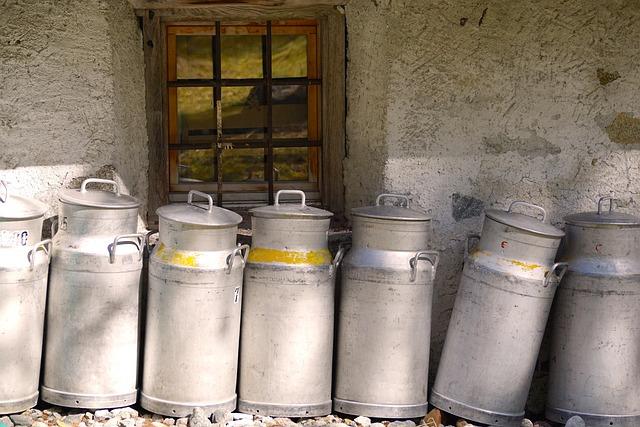Dairy Container Market Sees Rising Demand for Portable Lightweight and Environmentally Responsible Materials

The dairy container market has undergone significant transformation in recent years, influenced by shifts in consumer preferences, regulatory changes, environmental concerns, and rapid technological advancements. As global dairy consumption continues to rise, manufacturers and packaging companies are adapting their strategies to meet evolving demands and sustainability goals.
One of the most noticeable trends in the dairy container market is the growing emphasis on eco-friendly packaging solutions. With increasing awareness of climate change and plastic pollution, dairy producers are shifting away from traditional plastic containers in favor of biodegradable, recyclable, and reusable alternatives. Materials such as paperboard, glass, bioplastics, and aluminum are gaining popularity. Companies like Tetra Pak and SIG Combibloc have made significant strides in offering sustainable solutions that maintain product integrity while minimizing environmental impact.
Technological innovations are also playing a pivotal role. Smart packaging, for instance, is becoming more widespread, offering both manufacturers and consumers new ways to interact with dairy products. QR codes, freshness indicators, and RFID tags are being integrated into containers to enhance traceability, monitor product quality, and reduce food waste. These innovations are particularly attractive in premium dairy segments such as organic milk, artisanal cheese, and functional yogurts, where consumers are more willing to pay for added value.
Another significant development is the rise of single-serve and on-the-go dairy containers. Driven by busy lifestyles and growing demand for convenience, dairy companies are increasingly offering smaller, portable packaging formats. These are especially popular in urban markets and among younger consumers. Products like drinkable yogurts, milk-based smoothies, and protein-packed dairy beverages are being sold in resealable pouches, cups with built-in straws, and PET bottles with ergonomic designs.
The market is also witnessing geographical shifts in demand. While North America and Europe remain mature markets, Asia-Pacific, Latin America, and parts of Africa are experiencing rapid growth. Rising incomes, urbanization, and changes in dietary habits are fueling dairy consumption in these regions, prompting international and local players to invest in efficient and scalable container solutions that cater to regional preferences.
Regulatory frameworks are influencing packaging choices as well. Governments worldwide are tightening restrictions on single-use plastics and pushing for higher recyclability standards. The European Union, for example, has implemented stringent packaging waste directives, while countries like India are banning specific types of plastic packaging altogether. As a result, dairy companies must not only innovate but also ensure compliance with these ever-evolving regulations to avoid penalties and maintain their market positions.
Brand differentiation is another factor driving developments in dairy containers. Packaging is not just a vessel but a communication tool that conveys freshness, quality, and brand identity. Sleek designs, premium finishes, and functional features like tamper-evident seals or resealable lids are helping brands stand out on crowded retail shelves. Customizable containers that allow co-branding or promotional collaborations are also becoming increasingly common.
Furthermore, the growth of e-commerce has created new demands for dairy container durability and logistics. With more consumers purchasing dairy products online, packaging must withstand transport while maintaining temperature integrity and preventing leaks or spoilage. This has led to the development of insulated containers, advanced sealing techniques, and lightweight yet robust materials suited for direct-to-consumer delivery.
In conclusion, the dairy container market is evolving rapidly in response to consumer expectations, technological progress, regulatory shifts, and sustainability imperatives. As competition intensifies, stakeholders across the value chain — from dairy farmers and processors to packaging manufacturers and retailers — must continue to innovate. Those who can balance functionality, sustainability, and aesthetic appeal are likely to capture greater market share and ensure long-term growth in this dynamic industry.
- Art
- Causes
- Crafts
- Dance
- Drinks
- Film
- Fitness
- Food
- Spellen
- Gardening
- Health
- Home
- Literature
- Music
- Networking
- Other
- Party
- Religion
- Shopping
- Sports
- Theater
- Wellness
- Politics
- IT
- Relationship
- Blockchain
- NFT
- Crypto
- Fintech
- Automobile
- Faith
- Family
- Animals
- Travel
- Pets
- Coding
- Comedy
- Movie
- Game
- Computer


